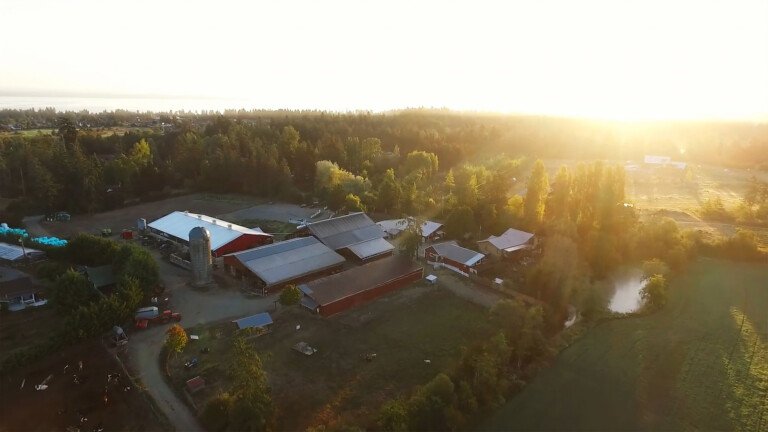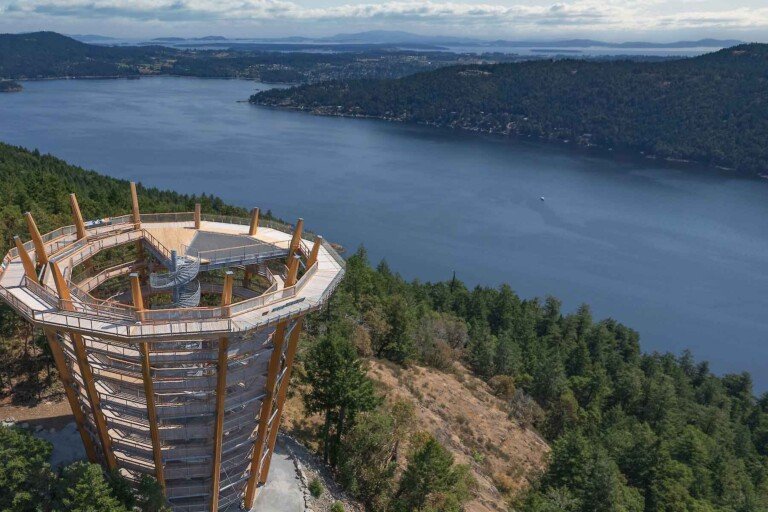Of all the wildlife found within Pacific Rim National Park, the most abundant and diverse is undoubtedly found in the marine environment. The marine components of Pacific Rim include the offshore waters to the 20 metre depth contour adjacent to the Long Beach and West Coast Trail units, and the waters within the designated boundaries of the Broken Group Islands.
The open ocean is home for a myriad of life forms, including whales, fish, birds and, potentially, creatures still waiting to be discovered. The ocean controls our weather and moderates our climate. Its undersea mountains are higher and its trenches deeper than anything on land. It provides the nourishment, directly and indirectly, that sustains life on our planet. Reluctant to give up its mysteries, it is the source of legend and myth.
Skirting the shores of the park, the waters over the continental shelf are the richest component of the marine environment. This region is inhabited by a multitude of organisms, from leviathan whales and varieties of fish, to the tiniest of microscopic plants and animals. This water column closest to the continent is rich with nutrients and life. Deep waters upwelling into the shallows seasonally recycle materials to the surface where they combine with river runoff and sunlight to provide a rich and nutritious “soup”, fueling the food chains of the sea.
The park’s intertidal zone, where waters are tugged between land and sea, is divided into distinct “bands” of marine life. Associated with each band are characteristic assemblages of plants and animals. These patterns are the result of various environmental factors: wave exposure, the type of substrate, and tidal range. The ebb and flow of the tide alternately exposes and floods life within these bands. Only species that can adjust to the extremes imposed by tidal fluctuations will survive.
The lack of grinding winter ice against Vancouver Island’s rocky shorelines has also contributed to the establishment of one of the world’s richest intertidal areas.
The highest level, the splash zone, is misted with wave spray and rarely flooded. Closer to the sea, and submerged by tides about 10% of the time, is the high intertidal zone. Regions covered by tidal waters for 50% of the tidal cycle constitute the middle intertidal zone. The low intertidal zone is inundated by the sea 90% of the time. These tide-washed “gardens” are represented by a variety of predictable species.
The splash zone is home to lichens, isopods (pill bugs), periwinkles and some hardy plants. Acorn barnacles typically delineate the highest margin of the high intertidal zone, followed by bladder wrack (a type of seaweed), limpets and purple shore crabs. Beds of mussels and gooseneck barnacles crowd the middle intertidal zone, along with sea sac (a seaweed) and ochre seastars. The lower intertidal zone displays a profusion of life. Its colourful tapestries carpet the bottom of deep tide pools with purple sea urchins, green anemone, pink coralline algae and iridescent seaweed. Lower still, the rocky subtidal regions are dominated by larger kelp. Beyond a depth of 30 metres, these kelp beds disappear. But intertidal zonation is not as easily defined as that. A site’s exposure to wave energy and the makeup of its substrate influence the distribution and abundance of expected species.
Almost all of the park’s coastline is exposed to heavy surf. Rocky headlands broken by sand or gravel beaches make up most of the shoreline. Subtidal areas are predominately sand, especially below 12 metres, where a sandy plain extends for many kilometres offshore. Mud bottoms develop in quiet bays or in channels protected from strong currents.
Nearby Regions & Towns:
- Tofino
- Ucluelet
- Pacific Rim (West Coast)
- Pacific Rim Highway 4
- Barkley Sound
- Broken Group Islands
- Bamfield
- Port Renfrew
- Port Alberni
More Information:
Parks Canada – British Columbia
Box 129, 23433 Mavis Avenue
Fort Langley, BC
V1M 2R5
Phone: 604-513-4777






